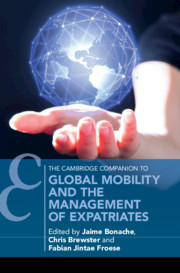Book contents
- Global Mobility and the Management of Expatriates
- Cambridge Companions to Management
- Global Mobility and the Management of Expatriates
- Copyright page
- Contents
- Figures
- Tables
- Contributors
- 1 Global Mobility
- Part I The Expatriation Process of Corporate Expatriates
- Part II Different Types of Expatriates and Stakeholders
- 7 Short-term Assignees, International Business Travellers, and International Commuters
- 8 Self-initiated Expatriates
- 9 Skilled Migrant Careers
- 10 Women and Global Mobility
- 11 Global Families
- 12 Roles and Challenges for Global Mobility Departments
- Index
- References
10 - Women and Global Mobility
from Part II - Different Types of Expatriates and Stakeholders
Published online by Cambridge University Press: 12 November 2020
- Global Mobility and the Management of Expatriates
- Cambridge Companions to Management
- Global Mobility and the Management of Expatriates
- Copyright page
- Contents
- Figures
- Tables
- Contributors
- 1 Global Mobility
- Part I The Expatriation Process of Corporate Expatriates
- Part II Different Types of Expatriates and Stakeholders
- 7 Short-term Assignees, International Business Travellers, and International Commuters
- 8 Self-initiated Expatriates
- 9 Skilled Migrant Careers
- 10 Women and Global Mobility
- 11 Global Families
- 12 Roles and Challenges for Global Mobility Departments
- Index
- References
Summary
While there has been progress for women in globally mobile work, there are enduring problems and challenges. In particular, women continue to be under-represented in management and leadership roles worldwide. In this chapter, we summarise current knowledge about women and globally mobile work and present a framework of factors that may either facilitate or hinder global mobility for women. We identify some important gaps in knowledge and suggest areas for future research to improve understanding of the experiences of women and their participation in global mobility. Finally, we offer practical recommendations for policy-makers, organisations that manage globally mobile workers, leaders and managers, and women who are currently and/or aspire to be globally mobile.
Keywords
- Type
- Chapter
- Information
- Global Mobility and the Management of Expatriates , pp. 225 - 261Publisher: Cambridge University PressPrint publication year: 2020



